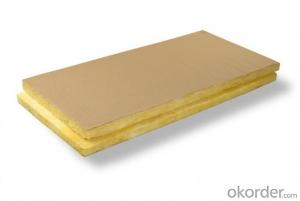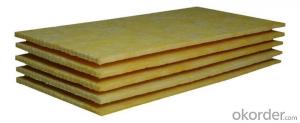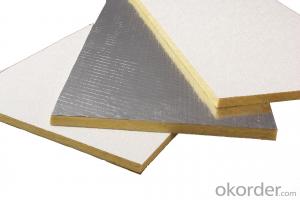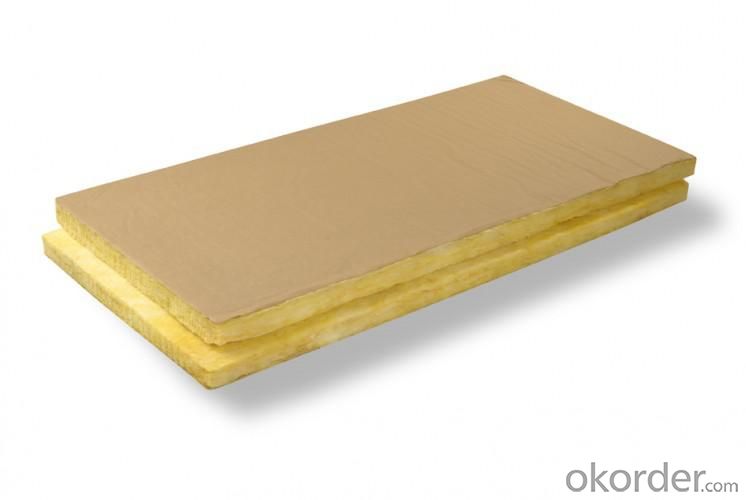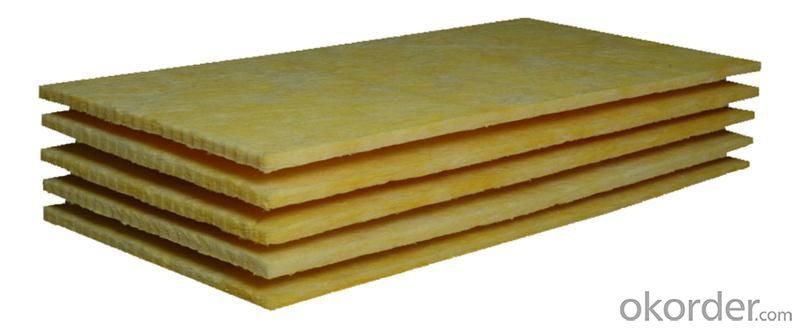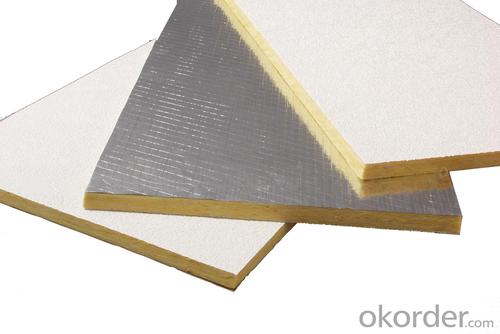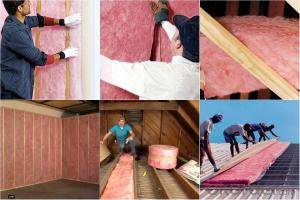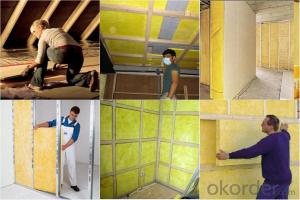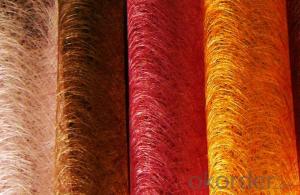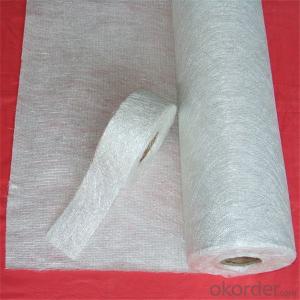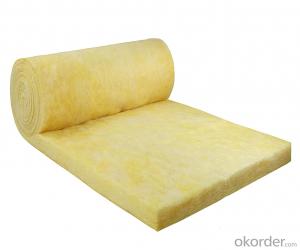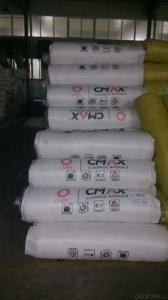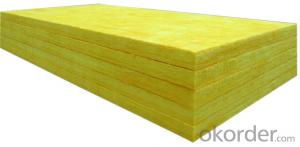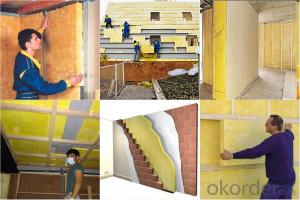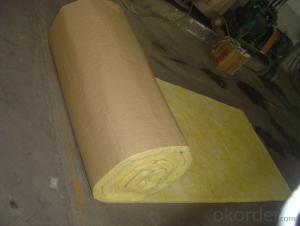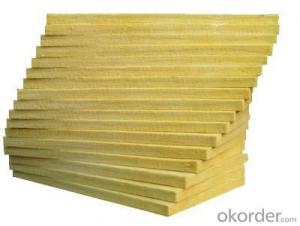Fiberglass Mat Tissue Glass Wool Insulation Blanket with Kraft Facing
- Loading Port:
- Tianjin
- Payment Terms:
- TT OR LC
- Min Order Qty:
- 5000 m²
- Supply Capability:
- 20000 m²/month
OKorder Service Pledge
OKorder Financial Service
You Might Also Like
1.Description of Glass Wool Insulation Blanket With Kraft Facing:
At the system HOT END, the raw materials are dosed, mixed, melted, fiberized, impregnated with a special binder and formed into a primitive mat of very fine fiber glass. Continuous conveyors transport the mat to the COLD END of the plant for binder polymerization. The product is then cut to shape and packed for shipping.
Width: 0.4-1.2m
Length: 5-30m
Thickness: 25-200mm
Density: 10-50kg/m3
2.Main features of Glass Wool Blanket:
1.Excellent thermal, acoustical properties
2.Light weight and easy to fabricate on job site
3.Non-combustible and fire-retardant
4.Very economical, especially when using thick layers of insulation
5.Durable, life-time and termite proof
3.Glass Wool Blanket Images:
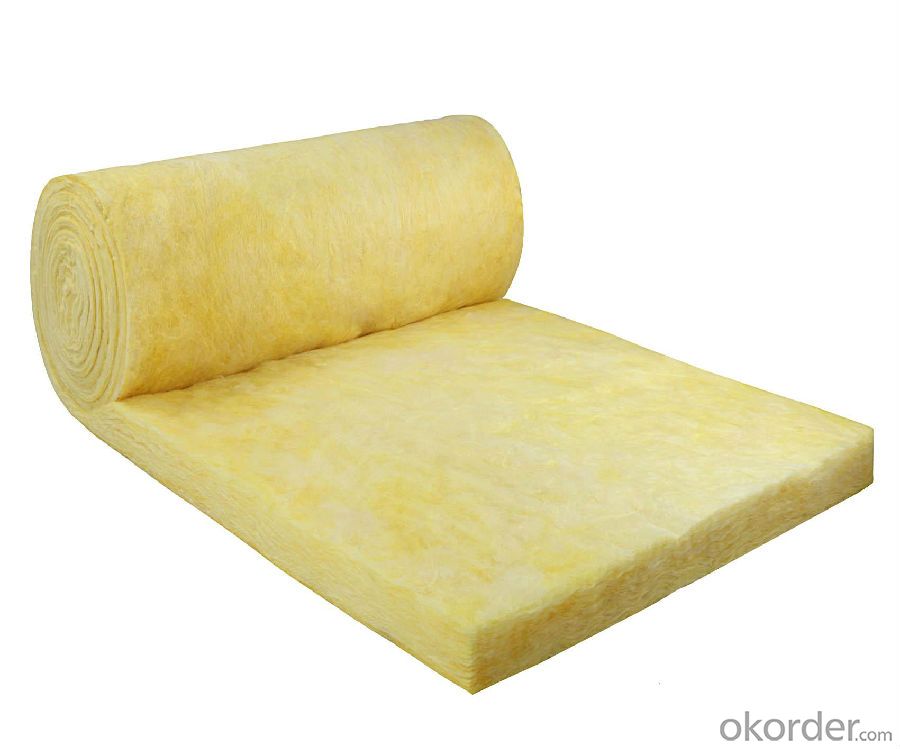
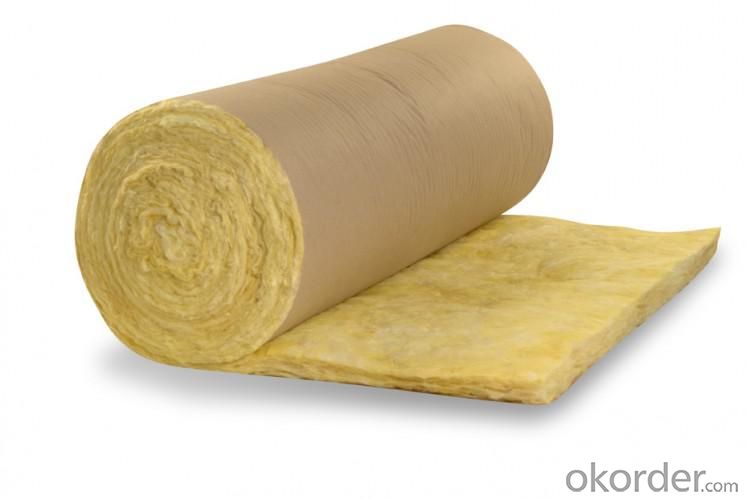
4. Glass Wool Insulation Blanket Technical Parameters:
Property | High/low temperature resistance, oil and fuel resistance, weathering resistance, O zone resistance etc. |
Shape | According to your requirement. |
Color | Any color is available ,according to your requirements. |
Material | NBR, CR, SBR, EPDM, IIR, NR, EP, Silicone, VITON etc. |
Hardness | 30-90ShoreA |
Delivery | In 10 days |
Packing | Plastic bag & carton box or according to your requirements. |
Application | Electronic field, industrial machine & equipment, house-hold appliance, telecommunication, automobile, medical equipment industry etc. |
5.FAQ
We have organized several common questions for our clients,may help you sincerely:
①How about your company?
A world class manufacturer & supplier of Glass Wool Blanket is one of the large scale professional investment casting production bases in China,consisting of both casting foundry forging and machining factory. Annually more than 8000 tons Precision casting and forging parts are exported to markets in Europe,America and Japan. OEM casting and forging service available according to customer’s requirement.
②How to guarantee the quality of the products?
We have established the international advanced quality management system every link from raw material to final product we have strict quality test; We resolutely put an end to unqualified products flowing into the market. At the same time, we will provide necessary follow-up service assurance.
- Q: Can fiberglass mat tissue be used for architectural sculptures?
- Yes, fiberglass mat tissue can be used for architectural sculptures. Fiberglass mat tissue is a versatile material that is commonly used in various applications, including architectural sculptures. It is lightweight, flexible, and has excellent strength and durability properties, making it suitable for creating intricate and detailed sculptures. The fiberglass mat tissue can be molded and shaped into various forms, allowing artists and sculptors to bring their creative visions to life. It can be used to create sculptures of different sizes and shapes, whether it is a small decorative piece or a large-scale installation. Additionally, fiberglass mat tissue is resistant to weather and environmental conditions, making it suitable for outdoor sculptures that are exposed to harsh elements. It can withstand extreme temperature changes, UV radiation, and moisture, ensuring that the sculptures remain intact and visually appealing for a long time. Furthermore, the material can be easily painted and finished to achieve the desired aesthetic appearance. It can be coated with different types of paints, varnishes, or finishes to enhance the visual appeal and protect the surface of the sculpture from potential damage. Overall, fiberglass mat tissue provides artists and sculptors with a reliable and versatile medium for creating architectural sculptures. Its strength, durability, and adaptability make it an excellent choice for bringing artistic visions to life in the architectural realm.
- Q: Can fiberglass mat tissue be used for repairing fiberglass structures?
- Fiberglass structures can be repaired using fiberglass mat tissue. This material is widely used in the construction and repair of fiberglass structures because of its versatility. Its purpose is to strengthen and reinforce damaged areas of the structure. To ensure a durable repair, the mat tissue is usually applied with resin, which bonds the fibers together. It is particularly effective for fixing cracks, holes, and other damages on fiberglass surfaces. In summary, fiberglass mat tissue is an outstanding option for repairing fiberglass structures due to its strength, flexibility, and ability to adapt to different shapes and sizes.
- Q: Is fiberglass mat tissue suitable for marine repairs?
- Yes, fiberglass mat tissue is suitable for marine repairs. It is commonly used in boat and yacht repairs due to its excellent strength, durability, and resistance to water and corrosion. Additionally, fiberglass mat tissue is easy to work with and can be used for various applications such as hull, deck, and structural repairs in marine environments.
- Q: Does fiberglass mat tissue require any special maintenance after installation?
- After the installation of fiberglass mat tissue, it typically does not require any special maintenance. Fiberglass mat tissue is designed to be durable and resistant to wear and tear. It is also highly resistant to moisture, chemicals, and UV radiation, making it suitable for various applications such as roofing, insulation, and wall covering. However, it is recommended to inspect the fiberglass mat tissue periodically to ensure it remains in good condition. This can involve checking for any signs of damage, such as cracks, tears, or delamination. If any issues are found, they should be addressed promptly to prevent further damage. Additionally, it is important to follow the manufacturer's guidelines and recommendations for the specific type of fiberglass mat tissue used. This may include avoiding exposure to certain chemicals or using appropriate cleaning methods if necessary. Overall, while fiberglass mat tissue is generally low-maintenance, regular inspections and adherence to manufacturer's guidelines can help ensure its longevity and optimal performance.
- Q: What are the different types of fiberglass mat tissue available?
- There are various types of fiberglass mat tissue available, including chopped strand mat (CSM), continuous filament mat (CFM), and surface veil mat. Each type has different characteristics and is used for specific applications in industries such as construction, automotive, and marine. CSM is commonly used for general purpose applications, CFM provides higher strength and stiffness, and surface veil mat is used for surface finishing and improving the aesthetics of fiberglass products.
- Q: Can fiberglass mat tissue be used for attic insulation?
- Fiberglass mat tissue is not typically used as a primary insulation material for attics. While it does offer some thermal resistance, it is generally designed to be used in conjunction with other insulation materials, such as fiberglass batts or blown-in insulation, to enhance their performance. Fiberglass mat tissue is often used as a facing material for insulation products, serving as a vapor barrier or as a reinforcement layer. It can help improve the durability and moisture resistance of the insulation, but its main purpose is not to provide significant thermal insulation on its own. When insulating an attic, it is more common to use materials specifically designed for thermal insulation, such as fiberglass batts, cellulose, or spray foam insulation. These materials have higher R-values and are more effective at reducing heat transfer, which is crucial for maintaining a comfortable indoor temperature and energy efficiency. In summary, while fiberglass mat tissue may have some insulating properties, its primary role is to enhance the performance of other insulation materials rather than being used as the sole insulation for an attic.
- Q: What is the expected lifespan of fiberglass mat tissue in outdoor applications?
- The expected lifespan of fiberglass mat tissue in outdoor applications can vary depending on various factors such as exposure to weather conditions, maintenance, and quality of the material. However, on average, fiberglass mat tissue is designed to have a lifespan of around 20 to 30 years in outdoor applications. Fiberglass mat tissue is commonly used for reinforcing and providing strength to surfaces in outdoor applications such as roofing, construction, and automotive industries. It is known for its durability, resistance to moisture, and ability to withstand harsh weather conditions. To ensure a longer lifespan for fiberglass mat tissue in outdoor applications, it is crucial to properly maintain and protect it. Regular inspections, cleaning, and repairs when necessary can help prevent any potential damage or deterioration. Additionally, applying protective coatings or sealants can further enhance its resistance to UV rays, moisture, and other environmental factors. It's important to note that the lifespan of fiberglass mat tissue can vary depending on the specific application and the quality of the material used. Therefore, it is recommended to consult with the manufacturer or a professional in the industry to determine the expected lifespan for a specific project or application.
- Q: What are the different color options available for fiberglass mat tissue?
- The different color options available for fiberglass mat tissue typically include white, gray, and beige.
- Q: Can fiberglass mat tissue be used for insulating metal roofs?
- Yes, fiberglass mat tissue can be used for insulating metal roofs. It provides a layer of insulation that helps to regulate temperature and minimize heat transfer, making it suitable for insulating metal roofs.
- Q: What are the potential health and safety concerns associated with working with fiberglass mat tissue?
- Working with fiberglass mat tissue can pose potential health and safety concerns. The fine fiberglass particles present in the air during handling and cutting can be inhaled, leading to respiratory issues such as irritation, coughing, and difficulty breathing. Prolonged exposure to these particles may also result in long-term lung damage. Additionally, direct skin contact with the fiberglass can cause skin irritation and allergic reactions. Hence, it is important to use appropriate personal protective equipment, such as gloves, masks, and goggles, to minimize these risks and ensure a safe working environment.
Send your message to us
Fiberglass Mat Tissue Glass Wool Insulation Blanket with Kraft Facing
- Loading Port:
- Tianjin
- Payment Terms:
- TT OR LC
- Min Order Qty:
- 5000 m²
- Supply Capability:
- 20000 m²/month
OKorder Service Pledge
OKorder Financial Service
Similar products
Hot products
Hot Searches
Related keywords
